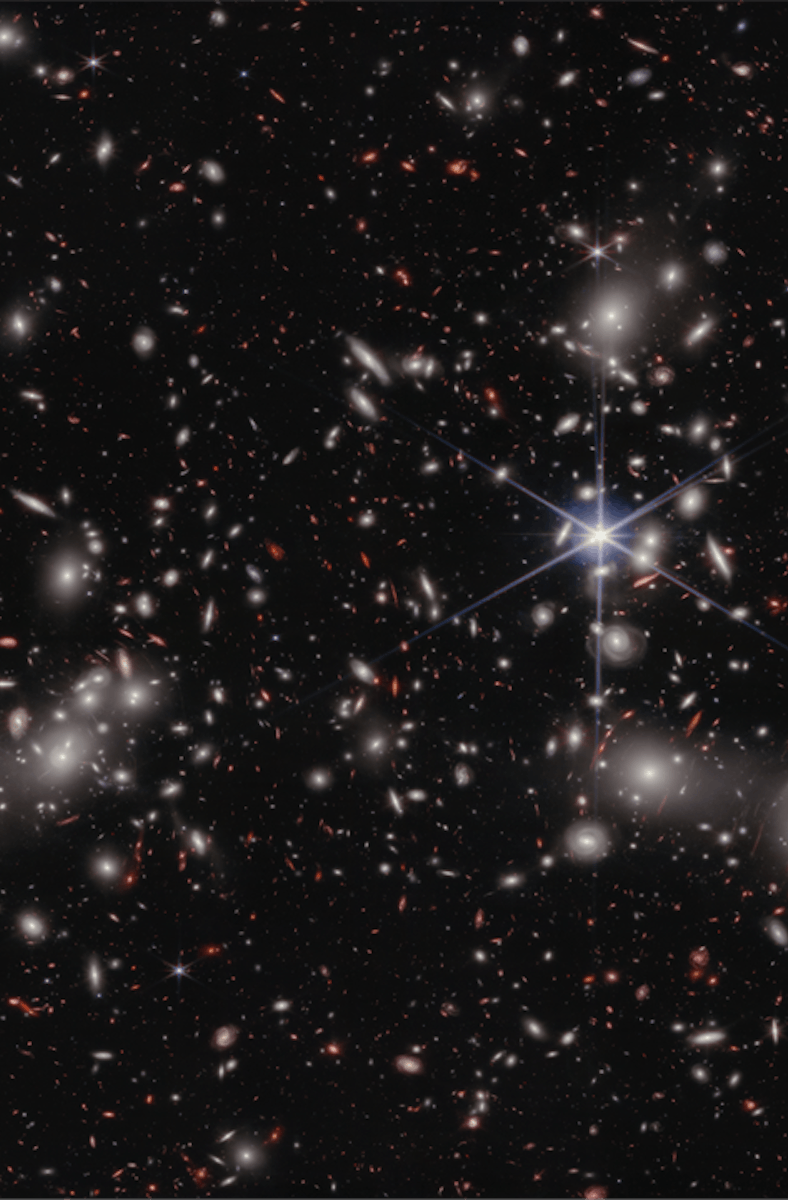Webb Telescope Just Uncovered Two of the Universe's Oldest-Known Galaxies
Detected amidst 60,000 points of light, these ancient galaxies provide clues about early galaxy formation.

A fresh look at some of the farthest reaches of space has turned up two of the oldest galaxies ever discovered, a major win for astronomers exploring what’s called the “Cosmic Dawn” when the first stars and galaxies formed in our universe.
Astronomers estimate that these two newly discovered galaxies — named Uncover Z-12 and Uncover Z-13 — coalesced just 330 million years after the birth of the universe. Back then the universe was only two percent of its current age, which makes these formations the second and fourth oldest galaxies ever discovered.
To infer their distances, astronomers from the James Webb Space Telescope (JWST) UNCOVER team used data from the telescope’s Near Infrared Spectrograph (NIRSpec). Back in 2022, the telescope took a survey of a patch of sky called the Pandora’s Cluster, and it was here, amidst 60,000 points of light, that the team detected these ancient beacons.
The second- and fourth-most distant galaxies ever seen, called UNCOVER z-13 and UNCOVER z-12, seen within Pandora’s Cluster.
According to a paper published in the journal Astrophysical Journal Letters, the team relied on cosmic magnifiers called galaxy clusters, whose massive gravity collectively enhanced the view of the distant light. NIRSpec found that these galaxies’ light has been stretched to a whopping 33 billion light-years away. That’s more than twice the distance than where it originated, but the ever-expanding universe had pulled it away into the farthest recesses of space we’re only just now discovering.
A Galactic Origin Story
This new discovery is part of a bigger objective, which is to figure out how galaxies arose out of “pristine primordial gas.”
“Very little is known about the early universe,” Bingjie Wang, the study’s first author and postdoctoral scholar at Pennsylvania State University, said in a press statement. “Prior to our analysis, we knew of only three galaxies confirmed at around this extreme distance. Studying these new galaxies and their properties has revealed the diversity of galaxies in the early universe and how much there is to be learned from them.”
Pandora’s Cluster, as seen by the Webb Telescope’s Near-Infrared Camera.
There are a few telltale clues that point to early galactic formation. For one, these universal old-timers will be brimming with star activity and they’ll also be lacking heavy metals, since those elements came after the first stars created them in the fiery furnaces of nuclear fusion. So far, these galaxies check those items off the list, but more data will need to pour in from deep space to get a clear census of the early universe.
But determining the origin of these early galaxies is still tricky business, according to the statement. One puzzle is that these ancient galaxies should all be made of the same stuff — the simplest atoms, hydrogen and helium — but instead they look quite different.
“Previously discovered galaxies at these distances are point sources — they appear as a dot in our images,” Wang said. “But one of ours appears elongated, almost like a peanut, and the other looks like a fluffy ball.”
One hypothesis as to why these galaxies are different suggests something happened to the stars during or after their formation.
“The diversity in the galaxy properties is really interesting. These early galaxies are expected to have formed out of similar materials, but already they are showing signs of being very different than one another,” Wang said.
Because JWST carries next-generation infrared sensors onboard, astronomers can pick up the faint, stretched light from incredible distances. After all, this ancient light is all astronomers have for exploring the early days of our universe.
This article was originally published on